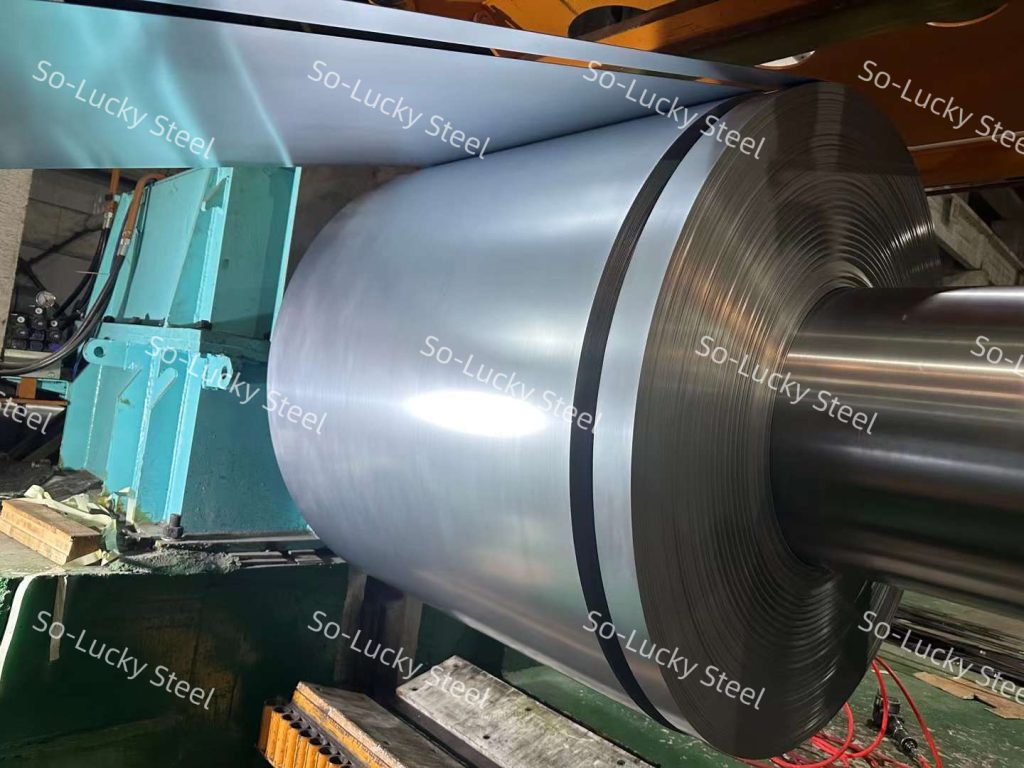
410 stainless steel is a kind of martensitic stainless steel, its chromium content is 11.5%, and its corrosion resistance is excellent. 410 stainless steel has been quenched, tempered and polished to improve corrosion resistance. And quenching and tempering just makes 410 stainless steel harder. Martensitic stainless steels are relatively poor compared to austenitic stainless steels, which is why martensitic stainless steels require a final heat treatment before they can be manufactured. Their working temperature suffers from loss of strength at high temperatures due to over-tempering and loss of ductility at low temperatures.
Chemical composition of 410 stainless steel
material | 410 | ||||||
chemical composition | C | Mn | Si | P | S | Cr | Ni |
≦0.15 | ≦1.00 | ≦1.00 | ≦0.04 | 0.03 | 11.5-13.5 | ≦0.75 | |
Mechanical properties of 410 stainless steel
material | 410 | |||
mechanical properties | Yield strength | Tensile strength | Elongation | hardness |
≥205 | ≥440 | ≥20 | ≤210 | |
Corrosion resistance of 410 stainless steel
Grade 410 stainless steel has the ability to withstand hot gases, steam, food, mild acids and bases, fresh water, and dry air. This steel is hardened for maximum corrosion and heat resistance. However, the corrosion resistance of grade 410 steel is lower than that of austenitic steel grade and grade 430 ferritic alloy with 17% chromium. In addition, a smooth surface finish helps further enhance the properties of the steel.
Heat Resistance of 410 Stainless Steel
Grade 410 steel has good scale resistance up to 650 °C. However, in the temperature range of 400 to 580 °C, the mechanical properties of the material tend to decrease.
Heat Treatment of 410 Stainless Steel
410 stainless steel is a commonly used martensitic stainless steel whose main components are iron, carbon, chromium and a small amount of other elements. Heat treatment refers to the process of heating and cooling materials within a certain temperature range to change the crystal structure and properties of materials.
For the heat treatment of 410 stainless steel, common methods include annealing and quenching.
Annealing: Annealing is the process of improving the toughness and machinability of materials by heating them to an appropriate temperature and then cooling them slowly. For 410 stainless steel, full annealing or subcritical annealing is usually used. Full annealing heats the material to 815-900 degrees Celsius and then cools in a furnace; subcritical annealing heats the material to 650-760 degrees Celsius and then air cools. Annealed 410 stainless steel has high toughness and plasticity.
Quenching: Quenching is the process of increasing the hardness and strength of a material by heating it to a high temperature and then cooling it rapidly. For 410 stainless steel, the quenching temperature is usually between 950-1065 degrees Celsius, followed by rapid cooling with water or oil. Quenched 410 stainless steel has high hardness, but relatively low toughness.
Welding and processing of 410 stainless steel
410 stainless steel is a stainless steel material with excellent corrosion resistance and mechanical strength, and is often used in the manufacture of ship parts, chemical equipment, food processing equipment, etc. Welding and processing 410 stainless steel need to pay attention to the following points:
welding:
Grade 410 steel can be welded using all conventional welding techniques, but the material should be preheated at 150 to 260 °C followed by a post-weld anneal to mitigate cracking. Grade 410 electrodes are recommended for tempering and post hardening. In the “as-welded” condition, grade 309 filler rods can be used to achieve ductile joints.
processing:
Grade 410 steel can be easily machined in the highly tempered or annealed condition. However, if the hardness of 410 grade steel is higher than 30HRC, it will be difficult to machine them. Easy-to-process grade 416 is the best substitute.
Application fields of 410 stainless steel
410 stainless steel is a common ferritic stainless steel with a chemical composition of 12% to 14% chromium and a low carbon content. It has good corrosion resistance, mechanical properties and processing properties, so it is widely used in many fields.
The following are some of the main application areas of 410 stainless steel:
Manufacturing: 410 stainless steel is commonly used in the manufacture of knives, blades, hammer heads, bolts, nuts, bearings and other mechanical parts. Its high hardness, strength and wear resistance make it widely used in parts that need to be durable and have a certain strength.
Food processing industry: Because 410 stainless steel has high corrosion resistance and high temperature resistance, it is widely used in the manufacture of food processing equipment. For example, cutters, chopping boards, knives, etc. in food processing plants can all be made of 410 stainless steel to ensure hygienic safety and long service life of the products.
Chemical industry: 410 stainless steel has good corrosion resistance to many chemical substances, so it is widely used in the chemical industry. It is often used in the manufacture of equipment such as storage tanks, pipelines, valves and reactors, used to transport and process various chemicals.
Medical devices: 410 stainless steel has excellent corrosion resistance and biocompatibility, and is widely used in the field of medical devices. For example, surgical instruments, surgical needles, dental instruments, etc. can all be made of 410 stainless steel.
Architectural decoration: Because 410 stainless steel has good appearance and corrosion resistance, it is also used in the field of architectural decoration. It can be used to make door handles, handrails, stair railings, decorative panels, etc., adding beauty and practicality to buildings.
These are just some typical application fields of 410 stainless steel, in fact it is also widely used in many other industrial and civil fields.

